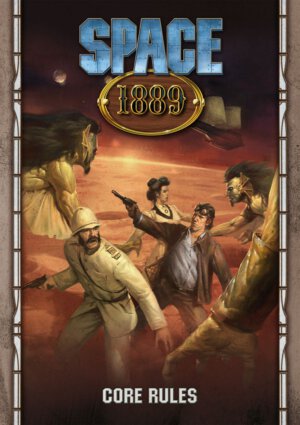
Publishers: Clockwork Publishing and Modiphius Entertainment
Authors: Frank Chadwick, Bjorn Beckert, Tilman Hakenberg, Stephan Johach, Stefan Küppers, Christoph Maser, Clemens Meier, Daniel Neugebauer, Ralf Sandfuchs, Martin Schmidt, and Ingo Siekmann
Year: 2015 (Original edition 1988)
Players: It’s an RPG, so two or more
Ages: 13+ (My opinion)
Playing Time: Ongoing
Genre: Victorian era science fiction
Pages: 252
Retail Price: Hardcover $50.99; PDF $23.99
Let me take you back, for a moment, to the heady days of gaming in the 1980’s and 90’s. At the time you couldn’t stroll through your friendly local game store without running across a plethora of titles from Game Designers’ Workshop (or GDW as we liked to say) which ranged from miniatures rules to board games to RPGs. I can’t tell you how many titles I had over the years from GDW but it certainly must have been at least thirty; including Traveller, Twilight 2000, Blue Max, and A House Divided to name but a few. Another GDW game which holds many fond memories for me is Frank Chadwick’s Space: 1889.

By 1889, mankind has taken to the various planets to establish colonies and scientific bases. Of course this wouldn’t make for very exciting science fiction without plenty of strange alien lifeforms so each of the planets are inhabited by differing intelligent creatures splayed out across the evolutionary range. Since the time period of the game also falls into that of the historical fervor of nationalism and colonization, the major powers on Earth are jockeying for position on not only our home planet but on planetary neighbors as well.
All of this leads to a setting filled with exploration, invention, political intrigue, and high adventure.
I’ll be the first to point out while many people consider Space: 1889 to be a steampunk role playing game – in fact the first ever published and the authors of this edition do call it steampunk – yet I’ve never thought the series fell into that genre or, more precisely, doesn’t fall into that category as we tend to define it today. Space: 1889 draws just as heavily from the speculative fiction of Jules Verne and H.G. Wells as it does the national motives and social mores of the real life time period in question; player characters in this game are apt to come from society’s upper classes and 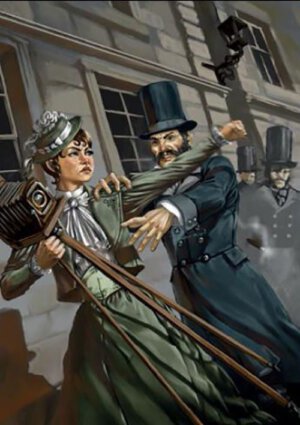
In other words, I don’t envision a setting filled with sounds of clanking and wheezing, smells of brimstone and ozone, sights of soot and grime, or thoughts of revolution and rebellion when Space: 1889 comes to mind. Obviously, this is just my take and I’m sure plenty of readers will disagree.
As for this new second edition of Space: 1889 there’s plenty to like right from the get go. The book is laid out nicely and the art is good if not necessarily eye popping. Indexes and a glossary are included also. Rather than beginning with the traditional route of character generation and game rules, this edition focuses on putting the gamer in the mood of the theme and setting from the start. The world of Space: 1889 is discussed as is the literature of the time period. I mentioned there’s a lot of inspiration drawn from Verne and Wells but the authors also helpfully point the reader to such classic writers as Rudyard Kipling and H.R. Rider as well as dime novels, “penny dreadfuls”, crime stories, and even some romantic fiction of the era to get the potential game master in the right frame of mind.
Readers will be introduced to key time lines leading up to 1889 and the points where fictional game history diverges from real history. Whereas I seem to remember the original game tackled 1870 and bridged out from there, this edition’s time line starts around 1853. I’ll mention this fictional setting includes an independent Confederate States of America (Lincoln dies of Typhus in 1862 leading to political paralysis in the North and peace negotiations between the two warring nations in 1864) which I’m not overly keen on. Personally, I’d be tossing that right out of any Space: 1889 campaign I’d be running…
Around forty five pages are devoted to the planet Earth as well as the make up of the major nations. The European powers, as well as relationships between the imperial heavyweights, are discussed in some detail with most of the attention paid (rightfully so) to Great Britain and the German Empire. Enough info is provided to flesh out the earthly locale and provide GMs with some ideas for adventures taking place right here on terra firma.
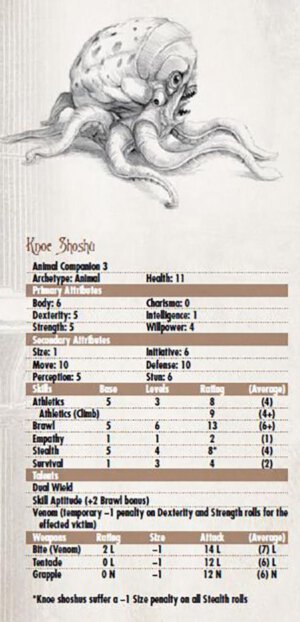
The reader makes their way through one hundred and thirty eight pages of background before the topic of character creation appears. I found this a nice approach as the gamer has their appetite whetted before diving into the core rules.The relatively generic Ubiquity rule system is used to power this second edition of Space: 1889. Ubiquity is probably best known as the rues behind the pulp action RPG Hollow Earth Expeditions.
Creating alter egos for use in Space: 1889 can be a relatively quick affair as players will begin by choosing an archetype and motivation. There aren’t character classes per say but archetypes which are more of a character concept than anything else. An archetype could be an explorer or soldier. Motivations are simply what drives that character to be involved in the adventures in the first place; an explorer could be motivated by fame while a soldier’s motive for exploring Martian canals could be duty to the Queen.
Attributes are broken into primary and secondary. Strength, body, charisma, intelligence, willpower, and dexterity compose the primary attributes and the secondary – such as movement, health, and perception – are calculated by way of corresponding primaries. Players will receive a points pool to purchase their primary attribute scores. These scores range from zero (abysmal) to six (amazing) or more; player characters shouldn’t have scores of zero, except for size, and an average rating would be two. Secondary attributes are calculated by combining two primary (dexterity and intelligence to calculate initiative as an example) to provide the secondary scores.
Characters also purchase skills ranging from firearms to academics to piloting and many things in between. Skills are simple enough as each is based upon a primary attribute and the skill level is applied to that core number. Players can apply an additional specialization the a skill as well. For example someone choosing the firearms skill could drill down further and pay for a specialization in rifles.
Players can fine tune their characters even more with talents, resources, and possibly include a character flaw. You certainly won’t be creating cookie cutter characters with all of these aspects to blend together. Keep in mind Space: 1889 doesn’t differentiate between humans, Martians, or Venusians so character creation plays out the same way for all races.
The Ubiquity system is rather easy to implement as all action resolution is based on dice pools and rolling for success. An even die result is a success while an odd result is a failure. The player decides on an action to perform and the GM determines a difficulty number. Then the player determines the dice pool based on the appropriate attribute or skill and rolls that number of dice looking to equal or exceed the successes required by the difficulty.
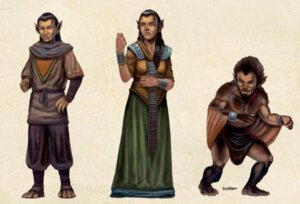
Of course there’s more to the rules than just those simple mechanics but everything really breaks down into rolling successes. Plenty of modifiers come into play as well and how great the player succeeds or fails in their task is determined by how many successes over or below the difficulty number are rolled. Combat adds a few extra dimensions to this concept, with combat actions and initiative as well as defenders rolling dice alongside attackers, but the core idea of success and failure rolls still dictate the outcomes.
I have to say the second edition core rules are certainly a leg up on the original. Honestly, GDW put together some really great RPG settings but to say the actual mechanics involved to put the game in action were extremely clunky would be putting it very, very kindly. The Ubiquity system might veer a touch too far toward the simpler side of things for fans of the original but I think 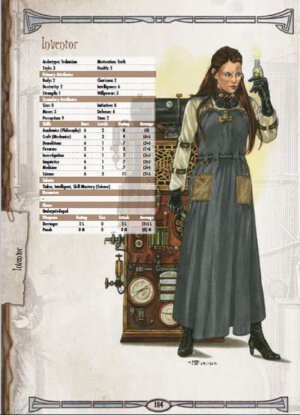
Space: 1889 concludes with a section on equipment and inventions as well as some sources gamers can look to for inspiration in creating adventures within the setting.
While there’s a lot included in the core book readers will be surprised to find there are no rules or info regarding vehicles, ships of the ether, or space combat. You won’t find any rules regarding the players concocting their own strange and wonderful inventions either. I don’t seem to recall any of this included in the original 1988 book either and I’m sure these topics will be tackled in future supplements.
I do have to say it’s amazing there isn’t a sample or beginning adventure in the core book though; even a ten or fifteen page tale for newcomers to the setting would have been very welcome although the first standalone adventure, London Bridge Has Fallen Down has arrived in PDF and DriveThruRPG carries plenty of PDFs of adventures and supplements for the previous edition which shouldn’t be difficult to convert. Still, not including some sort of adventure in the package feels like a strange presentation decision.
I really like this new edition of Space: 1889 and can say I’m glad to see it received a complete overhaul of the mechanics. I mentioned previously I don’t consider the game to be a true steampunk title but that’s just fine with me since there are already plenty of RPGs which fit that bill. Those interested in a Victorian age science fiction game, well steeped in the historical values and mores of the era, will be pleased by this very welcome return.
- Tiny Cyberpunk has Landed in PDF - Apr 25, 2025
- Gary’s Appendix: Hardcover Omnibus is Up for Crowdfunding - Apr 25, 2025
- Save on the Coyote & Crow RPG through Bundle of Holding - Apr 25, 2025













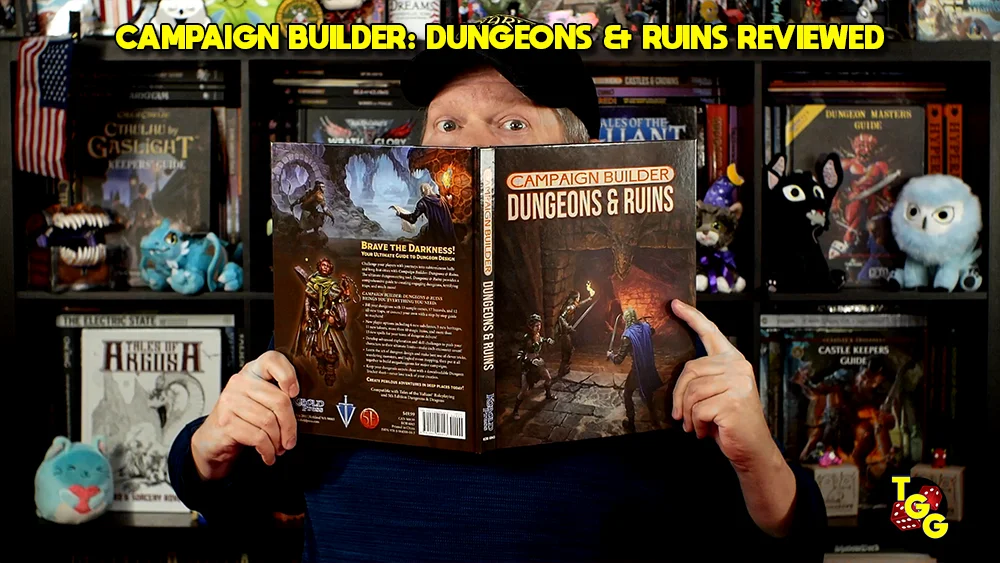






I just ran a game of the original Space: 1889 last night. Since it is fresh in my mind, I figured I would mention:
In the GDW version, there IS rules on Inventions, as well as Aerial Flyers.
The thing that the GDW had was a very confusing combat system, which I fortunately had thoroughly explained to me about 20 years ago. Once you know how to do it, the system runs pretty smoothly, and the game was a hit with the one-shot I ran.
I also own the Ubiquity system version which was reviewed here. I own quite a number of items for the system (6 in total besides the core book). I also own the newer Savage Worlds version. I’ve only played the Ubiquity game system version of Space: 1889 once at a game convention. I’ve ran a number of games with Ubiquity using the Hollow Earth setting, though, so I am very familiar with the game system. It IS a very light system. Good for quick pulp-style action, which game conventions really seem to favor. Not so good for an ongoing campaign, though, in my opinion. Great idea fodder, though!
Nice write-up for this!